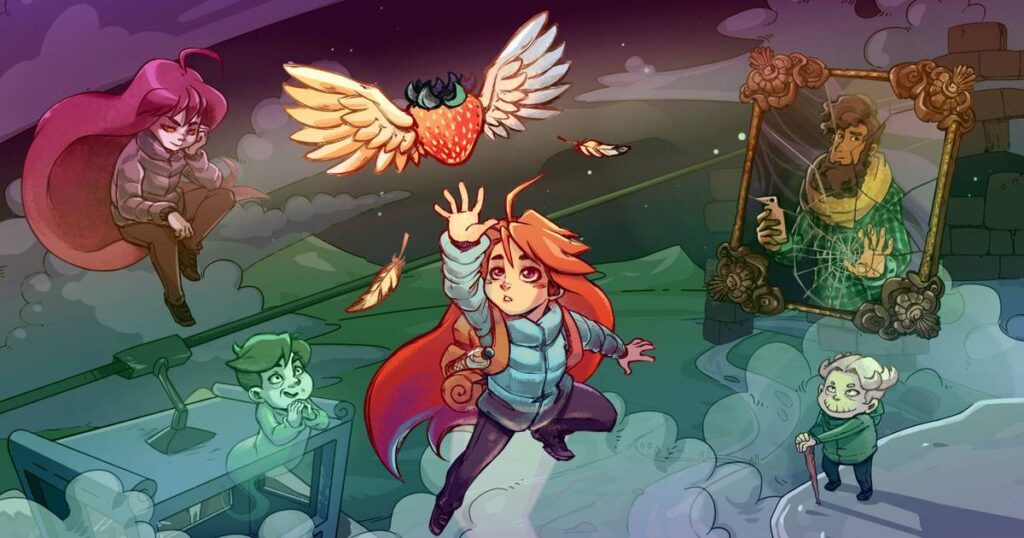In the ever-evolving landscape of the gaming industry, indie game developers face the daunting challenge of distinguishing their creations in a saturated market. With over 10,000 games released on platforms like Steam in 2022 alone (Steam Database, 2022), the competition is fierce. This article delves into advanced strategies that indie developers can employ to stand out, leveraging unique game design, effective marketing, community engagement, and data-driven decision-making.
Understanding the Indie Game Landscape
The indie game sector has witnessed exponential growth, with a reported 1,000% increase in indie game releases from 2010 to 2020 (Statista, 2021). This surge is attributed to the democratization of game development tools and platforms, allowing smaller teams to create and distribute games with relative ease. However, this accessibility has also led to market saturation, making it imperative for indie developers to carve out a niche.
Identifying Your Unique Selling Proposition (USP)
To stand out, indie developers must first identify their Unique Selling Proposition (USP). This involves understanding what makes their game different from others in the market. For instance, the success of games like “Celeste” and “Hollow Knight” can be attributed to their unique art styles, compelling narratives, and innovative gameplay mechanics. According to a study by the International Game Developers Association (IGDA), 70% of successful indie games had a clear USP that resonated with their target audience (IGDA, 2020).

Successful indie games, like Celeste, stand out with a UVP.
Leveraging Game Design and Innovation
Innovative game design is crucial for capturing player interest. Developers should focus on creating engaging mechanics that challenge conventional gameplay paradigms. For example, “Braid” revolutionized the platforming genre with its time-manipulation mechanics, while “Undertale” introduced a unique combat system that allowed players to spare enemies instead of defeating them. Research indicates that games with innovative mechanics tend to achieve higher player retention rates, with a 30% increase in engagement compared to traditional designs (GameAnalytics, 2021).
Effective Marketing Strategies
Marketing is a critical component of an indie game’s success. With limited budgets, developers must adopt cost-effective strategies to reach their audience. One effective approach is utilizing social media platforms to build a community around the game. According to a survey by Newzoo, 65% of gamers discover new games through social media channels (Newzoo, 2021). Developers should engage with potential players through regular updates, behind-the-scenes content, and interactive posts to foster a sense of community.
Utilizing Influencer Marketing
Influencer marketing has emerged as a powerful tool for indie developers. Collaborating with gaming influencers can significantly increase visibility and credibility. For instance, the indie game “Among Us” gained immense popularity after being featured by popular streamers like PewDiePie and Ninja. A report by Influencer Marketing Hub indicates that 49% of consumers depend on influencer recommendations when making purchase decisions (Influencer Marketing Hub, 2022). Therefore, identifying and partnering with influencers who align with the game’s theme can yield substantial returns.
Data-Driven Marketing Decisions
Data analytics plays a pivotal role in shaping marketing strategies. By analyzing player behavior and preferences, developers can tailor their marketing efforts to better resonate with their audience. Tools like Google Analytics and Steam’s built-in analytics provide valuable insights into player demographics, engagement levels, and purchasing behavior. A study by App Annie found that games utilizing data-driven marketing strategies saw a 20% increase in user acquisition and retention (App Annie, 2021).

Community Engagement and Feedback
Building a strong community around a game is essential for long-term success. Engaging with players through forums, social media, and live events fosters loyalty and encourages word-of-mouth marketing. Developers should actively seek feedback from their community, using platforms like Discord and Reddit to gather insights and suggestions. A survey conducted by IGDA revealed that 80% of successful indie games incorporated player feedback into their development process (IGDA, 2020).
Implementing Early Access and Beta Testing
Utilizing Early Access and beta testing can provide invaluable feedback while generating buzz before the official launch. Games like “Hades” and “Valheim” successfully employed this strategy, allowing players to experience the game while providing developers with critical insights for improvement. According to a report by Gamasutra, games that undergo beta testing experience a 25% reduction in post-launch bugs, leading to higher player satisfaction (Gamasutra, 2021).
Monetization Strategies
Choosing the right monetization strategy is crucial for indie developers. While traditional pricing models may work for some, others may benefit from alternative approaches such as freemium models or episodic content. For instance, “Fortnite” successfully adopted a free-to-play model with in-game purchases, generating over $9 billion in revenue in its first two years (Epic Games, 2020). Developers should analyze their target audience and market trends to determine the most effective monetization strategy.
Utilizing Crowdfunding Platforms
Crowdfunding has become a viable option for indie developers seeking financial support. Platforms like Kickstarter and Indiegogo allow developers to showcase their projects and secure funding directly from potential players. A report by Kickstarter revealed that games are the most successful category on the platform, with over $1 billion pledged to game projects since its inception (Kickstarter, 2021). This not only provides financial backing but also helps build a community of early supporters.
Conclusion
In conclusion, standing out in the crowded indie game market requires a multifaceted approach that combines innovative game design, effective marketing strategies, community engagement, and data-driven decision-making. By identifying a clear USP, leveraging social media and influencer marketing, engaging with players, and choosing the right monetization strategies, indie developers can significantly enhance their chances of success. As the gaming landscape continues to evolve, those who adapt and innovate will thrive in this competitive environment.
Key Takeaways:
- Identify your Unique Selling Proposition (USP) to differentiate your game.
- Focus on innovative game design to enhance player engagement.
- Utilize effective marketing strategies, including social media and influencer partnerships.
- Engage with your community and incorporate player feedback into development.
- Choose the right monetization strategy based on market trends and audience preferences.

